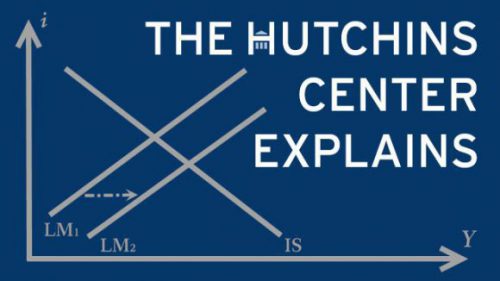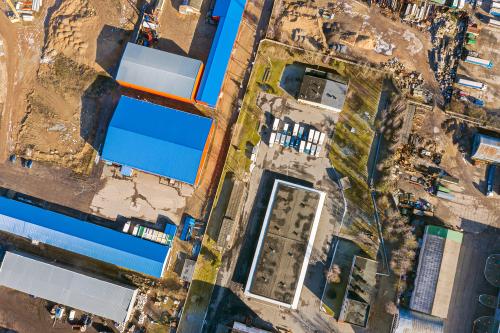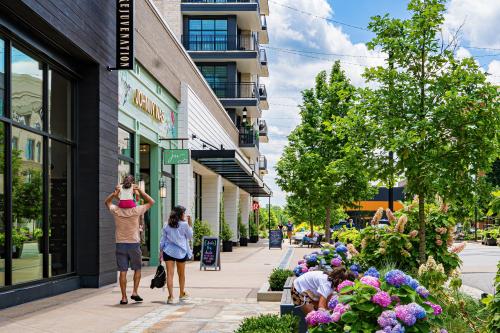This explainer was published in late spring 2025, before the One Big Beautiful Bill Act was passed. It is now superseded by this newer piece, published after the bill’s passage in July 2025.
Opportunity Zones (OZs), created by the 2017 Tax Cuts and Jobs Act, offer generous tax incentives for private investors who put money into any of 8,764 census tracts across the U.S., nearly all of them low-income communities. “Their purpose,” as the Internal Revenue Service puts it, “is to spur economic growth and job creation in low-income communities while providing benefits to investors.” The reconciliation bill that passed the House in 2025 would renew and tweak the OZ program. The version pending in the Senate would make the program permanent.
Here is more detail on what’s happening.
How do OZs work today?
Governors were allowed to designate as OZs up to 25% of the eligible census tracts—with eligibility based on criteria set by law, including median income and poverty levels. Investors with unrealized capital gains can deposit the gains into an OZ fund and defer capital gains tax until 2026, with up to 15% of the deferred gain tax exempt, depending on when the investment was made. Subsequent profits on an OZ investment escape capital gains tax altogether, provided the money is left in the fund for 10 years. More than $100 billion has been invested in OZs.
About two thirds of the zones, the bulk of them in metro areas, had received OZ-related investments through 2022 (the most recent data available). Pope Leo XIV’s childhood home in Dalton, Illinois, south of Chicago, is in an Opportunity Zone, but no major OZ project has broken ground in that census tract, in which 25% of the residents are below the poverty line.
Although the initial case for OZs was to draw private capital into job-creating businesses in OZs, 75% of the money through 2022 went to real estate, most to residential real estate—in part because of the design and implementation of the tax incentives, and in part because the real estate industry has years of experience in taking advantage of tax breaks.
What would the reconciliation bill pending in the House do?
The bill would sunset the current set of OZs at the end of 2026 (instead of 2028 as in existing law) and create a new set of zones beginning in January 2027 and ending in December 2033. Some tracts currently eligible for the OZ tax break would not be included in the new round, and the tax break—including the deferral of capital gains—would be available after January 1, 2027, only for investments made in the newly designated zones. The wording of this provision has alarmed OZ proponents who fear it will discourage new investment in existing OZs during the rest of 2025 and 2026. “Congress has inadvertently engineered a 12-month (or longer) dead zone,” says Jimmy Atkinson of Opportunity Zone.com, an OZ advocate.
One big change would be that in the new round of OZs, one third of the tracts a governor designates for OZ treatment would have to be rural, and investors who put money in these tracts and leave it there for five years would get a 30% reduction in the capital gains tax they owe on the deferred capital gains; those who invest in other OZs would get only a 10% reduction. (No one would be eligible for the 15% reduction offered in the original OZ legislation.)
The bill also would narrow the eligibility criteria for OZs, so there would be about 30% fewer OZs in the new round than in the 2017 round, according to estimates by OZ proponents.
OZs currently are open only to people with unrealized capital gains. The bill would allow investments of up to $10,000 of ordinary income, a threshold so low that OZs likely won’t bother soliciting investments. The provision would, however, allow OZ backers to say they’ve opened the program up to more people.
The House bill revives reporting requirements that were in the initial 2017 but were dropped in the Senate because of a parliamentary provision known as the Byrd Rule. That is likely to happen again when the bill gets to the Senate.
The Joint Tax Committee of Congress estimates that the OZ provision of the reconciliation bill would reduce federal revenues by $13.6 billion between 2025 and 2029—reflecting the extension of the OZ tax incentives and the increase in the tax break for rural areas.
What was left out of the House bill?
The House bill doesn’t make some changes that OZ critics have advocated. For example, it doesn’t provide bigger tax breaks for investors in very poor communities. It doesn’t restrict the types of investments eligible for the OZ tax break: self-storage facilities, luxury condos, high-end student housing, pickleball courts, and gold vaults would still be eligible.
Proponents of OZs have a long wish list that didn’t make the House bill—including making the tax break permanent, allowing OZ funds to invest in other OZ funds (known as fund of funds), and altering the details to encourage OZ investment in operating business (as opposed to real estate). They are hoping—and expecting—that the Senate will be more generous because Senate Finance Chair Mike Crapo (R-ID) and Sen. Tim Scott (R-SC) , a Finance Committee member who was instrumental in getting the OZ provision into the 2017 tax bill, are particularly enthusiastic about OZs.
What is in the Senate reconciliation bill?
The Senate Finance Committee version largely echoes the House bill, with one major difference: It makes the Opportunity Zones tax incentive permanent. Each year, beginning January 2027, governors would designate Census tracts as Opportunity Zones; the designations would last 10 years.
What does research on OZs show?
Most of the research about the initial impact of OZs finds that, although investment has flowed to designated areas, much of it might have occurred otherwise, or it has been in communities that already were showing signs of economic revival. One exception is multifamily housing, which seems to have increased more in OZs than would have been expected absent the law.
Only researchers at the U.S. Treasury and the Joint Tax Committee (and their co-authors) have had access to tax return data on OZs. With data through 2022, Treasury economists David Coyne and Craig Johnson, in a paper co-authored with Kevin Corinth of the American Enterprise Institute and Naomi Feldman of Hebrew University, found that about two-thirds of the zone received some OZ investment, but communities that were already doing better drew more than others. “We find that OZ investment … tends to flow to census tracts with greater pre-existing private investment and other conditions reflective of strong demand, within prosperous counties, and in areas of the country experiencing greater growth,” they said. According to the Joint Committee on Taxation, the states that received the most OZ investment per capita were Wyoming, Utah, Arizona, and Nevada (in that order), plus Washington, D.C.
Economists who don’t have access to the tax return data have found a variety of ways to try to measure the impact of OZs in the first few years of the program, often comparing OZs with tracts that were eligible but not chosen by governors to be OZs. For instance, writing in the Journal of Economic Perspectives, a peer-reviewed journal of the American Economic Association, Corinth and Feldman concluded, “Overall, a substantial amount of investment has flowed to the designated areas under the policy; however, aside from potentially important effects on residential real estate, it is unclear whether this represents additional investment that would not otherwise have occurred, and the evidence on benefits to residents of these areas is limited.” And Matthew Freedman, Shantanu Khanna and David Neumark of the University of California, Irvine, looking at 2018 and 2019 data, found “modest, if any, positive effects of the Opportunity Zone program on the employment, earnings, or poverty of zone residents.”
But Harrison Wheeler, now at the University of Toronto, looking closely at 12,000 neighborhoods in 47 large U.S. cities, concluded that new development increased significantly in OZs. More recently, the Economic Innovation Group, which originated and promoted OZs, says the tally of new addresses reported by the U.S. Postal Service between the third quarter of 2019 (when OZ regulations were finalized) and the third quarter of 2024 suggests that the program has led to an increase in construction of new housing in OZs.
The Brookings Institution is committed to quality, independence, and impact.
We are supported by a diverse array of funders. In line with our values and policies, each Brookings publication represents the sole views of its author(s).






Commentary
What’s happening with Opportunity Zones in the reconciliation bill?
June 17, 2025